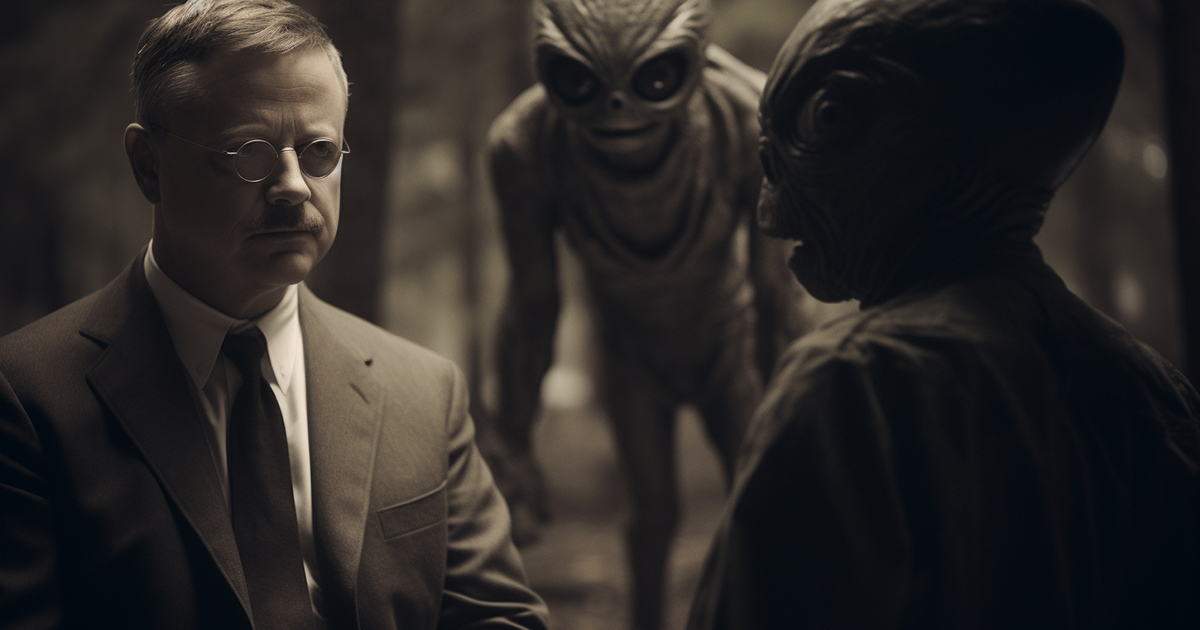On the 1st of August 1907, a remarkable incident took place at the estate of Theodore Roosevelt, the 26th president of the United States, in the serene town of Oyster Bay on Long Island.
This was not an ordinary occurrence, not a political affair or a festive gathering, but rather an enigmatic rendezvous with an otherworldly visitor. For almost two hours that evening, numerous neighbors stood transfixed as they beheld a massive luminous sphere suspended in the sky.
Little did they anticipate that this event, unfolding against the preparation of a critical speech by the U.S. president, would eventually weave itself into the tapestry of history.
In the year 1907, Theodore Roosevelt was deeply immersed in formulating a discourse that would delineate his strategic roadmap for the United States. His aspiration was to revolutionize the nation’s Navy into a cutting-edge force capable of propelling the United States towards global eminence.
This vision would later emerge as a pivotal point in the country’s journey into the First World War, marking a momentous twist in the historical narrative.
Yet, what adds an extra layer of intrigue to this UFO sighting is its synchronicity with Roosevelt’s visionary address. Were the peculiar lights over Sagamore Hill simply a fortuitous celestial spectacle, or did they hold a deeper significance?
Despite the scarcity of UFO accounts in the early 20th century, researchers find this incident compelling for various reasons.
Primarily, the connection of this event to a U.S. president during such a crucial juncture in history undeniably piques curiosity. Furthermore, it sheds light on the rarity of UFO sightings during this era, contrasting sharply with the surge in such reports post-World War II.
It was in the aftermath of the war, during the term of the 33rd President of the United States, Harry S. Truman, that UFO sightings garnered widespread attention.

The era of the Truman Administration stands as a seminal period in the realms of ufology. It marked the heyday of “flying saucers,” as they were commonly termed then. Incidents like Kenneth Arnold’s sighting, the Roswell episode, and the notorious Washington merry-go-round of July 1952 propelled UFOs into public consciousness. These events not only witnessed strange objects sighted by witnesses but also tracked by radar at National Airport and Andrews Air Force Base.
The sightings in Washington, D.C., held such significance that even President Truman found himself fielding questions about them. Interestingly, he neither outright denied the possibility of flying saucers nor dismissed them completely.
In his own words, “We discussed it at every conference with the military.” This acknowledgment raises intriguing queries regarding the government’s stance and awareness on UFOs.
It’s notable that this upsurge in UFO activity coincided with the dawn of the Cold War. The Truman Administration, in response to the impending geopolitical tensions, initiated a policy of government secrecy, often referred to as the National Security State.
The inception of the National Security Act of 1947 gave rise to the National Security Council and the Central Intelligence Agency, setting the platform for a new era of confidentiality.
The choice to heighten government secrecy had extensive ramifications, particularly concerning the discourse surrounding UFOs. At a critical moment of escalating UFO sightings, Truman’s actions imposed restrictions on open conversations about these mysterious phenomena.
This juncture in history was pivotal, as Truman’s resolution charted the course for the contemporary security regime and molded the trajectory of the 20th century at large.
Video:
In hindsight, the 1907 UFO encounter involving Roosevelt emerges as a captivating prologue to an epoch where UFOs would evolve into a focal point of intrigue, debate, and governmental secrecy. It emphasizes the intricate interplay between celestial enigmas and the evolution of human history, prompting contemplation on what other enigmatic secrets lie veiled within the annals of time.
